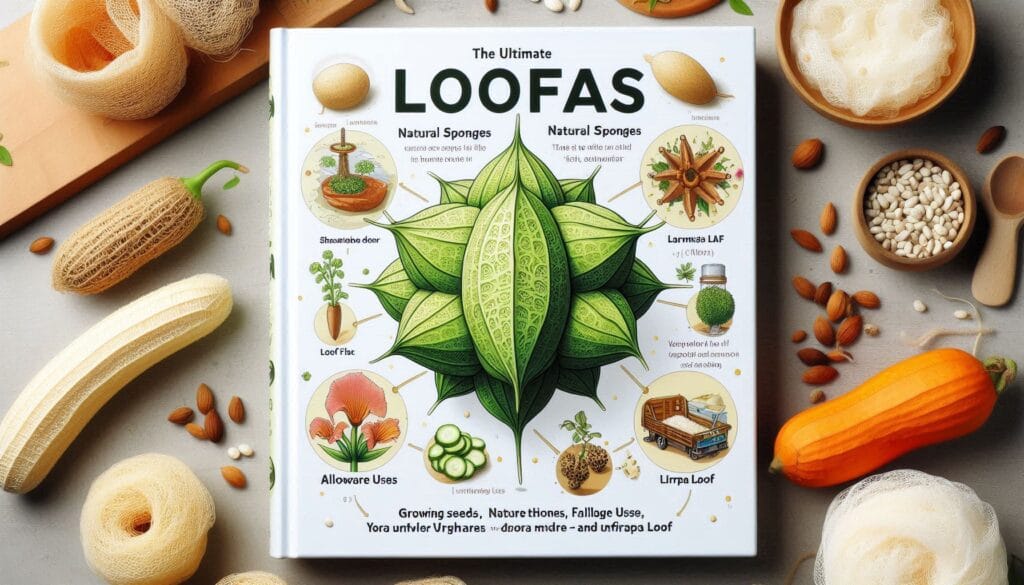The Ultimate Guide to loofas
From ancient skincare rituals to modern eco-friendly trends, the humble loofa (or loofah) has carved its place as a bathroom staple. But beyond its familiar scrubby texture lies a fascinating story of natural origins, cultural traditions, and practical uses. Whether you’re curious about its benefits, how to grow one, or even whether it’s allowed on planes, this guide dives deep into everything loofa-related.

What Is a Loofa?
A loofa is a natural exfoliating sponge derived from the fibrous skeleton of the Luffa cylindrica plant, a tropical vine in the cucumber family. When mature, the fruit dries into a tough, mesh-like structure perfect for scrubbing skin or dishes. Synthetic loofas, often made from plastic mesh, mimic this texture but lack the eco-friendly appeal of their plant-based counterparts.
Key Facts:
- Natural vs. Synthetic: Natural loofas are biodegradable and chemical-free, while synthetic options last longer but contribute to microplastic waste.
- Historical Use: Loofas have been used for centuries in Asia, Africa, and the Middle East for bathing, cleaning, and even as water filters.
From Seed to Sponge: How Loofas Are Made
Growing your own loofa is surprisingly simple, and “loofa seeds” are gaining popularity among gardeners. Here’s how it works:
- Planting: Sow seeds in warm, sunny soil after the last frost. The vines require sturdy trellises for support.
- Harvesting: Wait 150–200 days until the fruit turns yellow and lightweight. Peel off the brittle outer skin to reveal the fibrous inner core.
- Processing: Soak the fibers in water, rinse, and sun-dry to create a soft, durable sponge.
Pro Tip: For a whiter loofa, bleach the fibers lightly with hydrogen peroxide.
Why Choose a Natural Loofa?
The search term “natural loofa” reflects growing demand for sustainable skincare. Benefits include:
- Eco-Friendly: Biodegrades within months, unlike plastic sponges.
- Gentle Exfoliation: Removes dead skin cells without harsh chemicals.
- Versatility: Use it for body scrubbing, dishwashing, or even as a natural pot scrubber.
Popular Products: Look for organic, unbleached options on platforms like Etsy or eco-conscious brands like EcoTools.
Loofas in Global Cultures
The keyword “loofas in the villages” hints at traditional practices. In rural communities worldwide, loofas are more than beauty tools:
- India: Used in Ayurvedic rituals for lymphatic massage.
- Philippines: Woven into household cleaning brushes.
- Egypt: Historically employed as sandal insoles for breathability.
FAQs: Answering Top Loofa Queries
- “Are bath loofas allowed on planes?”
Yes! TSA permits natural and synthetic loofas in carry-ons. For hygiene, store them in a dry bag to prevent mildew. - “What’s the difference between ‘loofa’ and ‘loofer’?”
“Loofer” is often a typo or refers to slip-on shoes—no relation to the sponge! - “What does ‘loof’ mean?”
Likely a shorthand for “loofah.” The term luffa comes from the Arabic لُوف (lūf). - “Is ‘lirpa loof’ real?”
This appears to be a playful hoax (note “lirpa” spelled backward is “April”)—possibly an April Fool’s joke!
Buying Guide: How to Pick the Perfect Loofa
- Texture: Opt for medium-coarse fibers for exfoliation without irritation.
- Size: Larger loofas work for backs, while smaller ones suit delicate areas.
- Ethical Sourcing: Support fair-trade brands to ensure farmers are paid fairly.
Watch Out: Avoid loofas with artificial dyes or chemical coatings.
Loofa Care 101
Extend your loofa’s life with these tips:
- Dry Thoroughly: Hang it outside the shower to prevent mold.
- Sanitize Weekly: Soak in diluted vinegar or microwave (natural only!) for 1–2 minutes.
- Replace Regularly: Natural loofas last 3–4 weeks; synthetics up to 2 months.
The Future of Loofas
As zero-waste lifestyles gain traction, loofas are making a comeback. Innovators are turning them into biodegradable packaging and plant-based dishware—proving this ancient tool has modern potential.
Final Thoughts
Whether you’re a skincare enthusiast, eco-warrior, or curious gardener, the loofa offers a blend of simplicity and sustainability. By choosing natural options and understanding their roots, you’re not just scrubbing away dead skin—you’re connecting to a global tradition that’s stood the test of time.
Ready to Try One? Check out farmers’ markets or sustainable brands to snag your own piece of nature’s exfoliator! 🌿
Related Searches: How to grow loofa sponges, best natural exfoliators, eco-friendly bath products.
People Also Ask:
- Can loofas help with acne? Yes! Gentle exfoliation unclogs pores—just avoid over-scrubbing.
- Are loofas vegan? Natural ones are; synthetic versions may contain animal-derived glues.